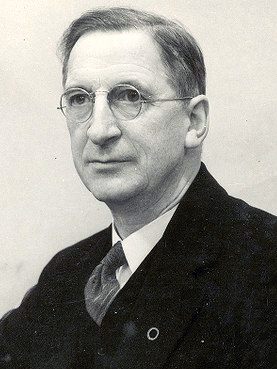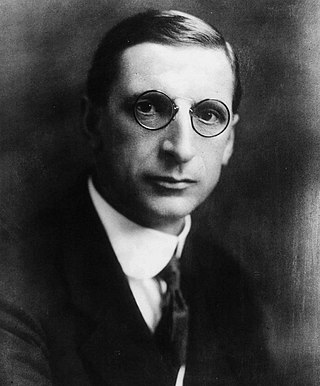
The Federal Radio Commission (FRC) was a government agency that regulated United States radio communication from its creation in 1927 until 1934, when it was succeeded by the Federal Communications Commission (FCC). The FRC was established by the Radio Act of 1927, which replaced the Radio Act of 1912 after the earlier law was found to lack sufficient oversight provisions, especially for regulating broadcasting stations. In addition to increased regulatory powers, the FRC introduced the standard that, in order to receive a license, a radio station had to be shown to be "in the public interest, convenience, or necessity".

This section of the timeline of United States history concern events from 1900 to 1929.

The 1937 Irish general election to the 9th Dáil was held on Thursday, 1 July, following the dissolution of the 8th Dáil on 14 June by Ceann Comhairle Frank Fahy on the direction of the Executive Council. The general election took place in 34 parliamentary constituencies throughout the Irish Free State for 138 seats in Dáil Éireann. The number of seats in the Dáil was reduced by 15, from 153 to 138 seats, under the Electoral Act 1935.

The 1933 Irish general election to the 8th Dáil was held on Tuesday, 24 January following the dissolution of the 7th Dáil on 2 January by Governor-General Domhnall Ua Buachalla on the advice of the Executive Council. The general election took place in 30 parliamentary constituencies throughout the Irish Free State for 153 seats in Dáil Éireann.

The 1932 Irish general election to the 7th Dáil was held on Tuesday, 16 February, following the dissolution of the 6th Dáil on 29 January by Governor-General James McNeill on the advice of President of the Executive Council W. T. Cosgrave. The general election took place in 30 parliamentary constituencies throughout the Irish Free State for 153 seats in Dáil Éireann. It was the first election held in the Irish Free State since the Statute of Westminster 1931 removed the authority of the United Kingdom parliament to legislate for the Dominions, including the Irish Free State.

The June 1927 Irish general election was to elect the 5th Dáil held on Thursday, 9 June following the dissolution of the 4th Dáil on 23 May 1927. It was the first election contested by Fianna Fáil, which had been formed a year earlier when Éamon de Valera, leader of the abstentionist Anti-Treaty Sinn Féin, failed to convince the party to take their seats if and when the Oath of Allegiance were abolished. Most of Sinn Féin's TDs, as well as the bulk of its support, shifted to Fianna Fáil. The impact of this shift saw Sinn Féin all but decimated; it was reduced to five seats. This was for many years the end of the party as a major force in the southern part of the island; it would not win more than 10 seats at an election until 2011, by which time it had undergone fundamental transformation. This election cemented Fianna Fáil as a major party; it and Cumann na nGaedheal/Fine Gael remained the two largest parties in Ireland until 2011.

The coat of arms of Poland is a white, crowned eagle with a golden beak and talons, on a red background.

The Royal and Parliamentary Titles Act 1927 was an act of the Parliament of the United Kingdom that authorised the alteration of the British monarch's royal style and titles, and altered the formal name of the British Parliament and hence of the state, in recognition of most of Ireland separating from the United Kingdom as the Irish Free State. It received royal assent on 12 April 1927.

The Cinematograph Films Act 1927 was an act of the UK Parliament designed to stimulate the declining British film industry. It received royal assent on 22 December 1927 and came into force on 1 April 1928.

The 69th United States Congress was a meeting of the legislative branch of the United States federal government, consisting of the United States Senate and the United States House of Representatives. It met in Washington, D.C. from March 4, 1925, to March 4, 1927, during the third and fourth years of Calvin Coolidge's presidency. The apportionment of seats in the House of Representatives was based on the 1910 United States census.

The 70th United States Congress was a meeting of the legislative branch of the United States federal government, consisting of the United States Senate and the United States House of Representatives. It met in Washington, D.C., from March 4, 1927, to March 4, 1929, during the last two years of Calvin Coolidge's presidency. The apportionment of seats in the House of Representatives was based on the 1910 United States census.
National University of Ireland (NUI) is a university constituency in Ireland, which currently elects three senators to Seanad Éireann. Its electorate is the graduates of the university, which has a number of constituent universities. It previously elected members to the House of Commons of the United Kingdom (1918–1921), to the House of Commons of Southern Ireland (1921) and to Dáil Éireann (1918–1936).

The Indian Forest Act, 1927 was largely based on previous Indian Forest Acts implemented under the British. The most famous one was the Indian Forest Act of 1878. Both the 1878 act and the 1927 act sought to consolidate and reserve the areas having forest cover, or significant wildlife, to regulate movement and transit of forest produce, and duty leviable on timber and other forest produce. It also defines the procedure to be followed for declaring an area to be a Reserved Forest, a Protected Forest or a Village Forest. It defines what is a forest offence, what are the acts prohibited inside a Reserved Forest, and penalties leviable on violation of the provisions of the Act.

The September 1927 Irish general election to the 6th Dáil was held on Thursday, 15 September, following the dissolution of the 5th Dáil on 25 August by Governor-General Tim Healy on the request of President of the Executive Council W. T. Cosgrave.
Fiske v. Kansas, 274 U.S. 380 (1927), was a United States Supreme Court Case that was first argued May 3, 1926 and finally decided May 16, 1927.
Glenelg was an electoral district of the Legislative Assembly in the Australian state of Victoria based in far south-western Victoria from 1904 to 1927.

North Melbourne was an electoral district of the Legislative Assembly in the Australian state of Victoria from 1859 to 1927.

Dáil Éireann is the lower house, and principal chamber, of the Oireachtas, which also includes the President of Ireland and Seanad Éireann. It consists of 160 members, each known as a Teachta Dála. TDs represent 39 constituencies and are directly elected for terms not exceeding five years, on the system of proportional representation by means of the single transferable vote (PR-STV). Its powers are similar to those of lower houses under many other bicameral parliamentary systems and it is by far the dominant branch of the Oireachtas. Subject to the limits imposed by the Constitution of Ireland, it has power to pass any law it wishes, and to nominate and remove the Taoiseach. Since 1922, it has met in Leinster House in Dublin.
United States v. Lee, 274 U.S. 559 (1927), is a significant decision by the United States Supreme Court protecting prohibition laws. The Court held 1) the Coast Guard may seize, board, and search vessels beyond the U.S. territorial waters and the high seas 12 miles outward from the coast if probable cause exists to believe that the vessel and persons in it are violating U.S. revenue laws, and 2) the Coast Guard's use of searchlights to view contents of a vessel on the high seas does not constitute a search and thus does not warrant Fourth Amendment protections.











